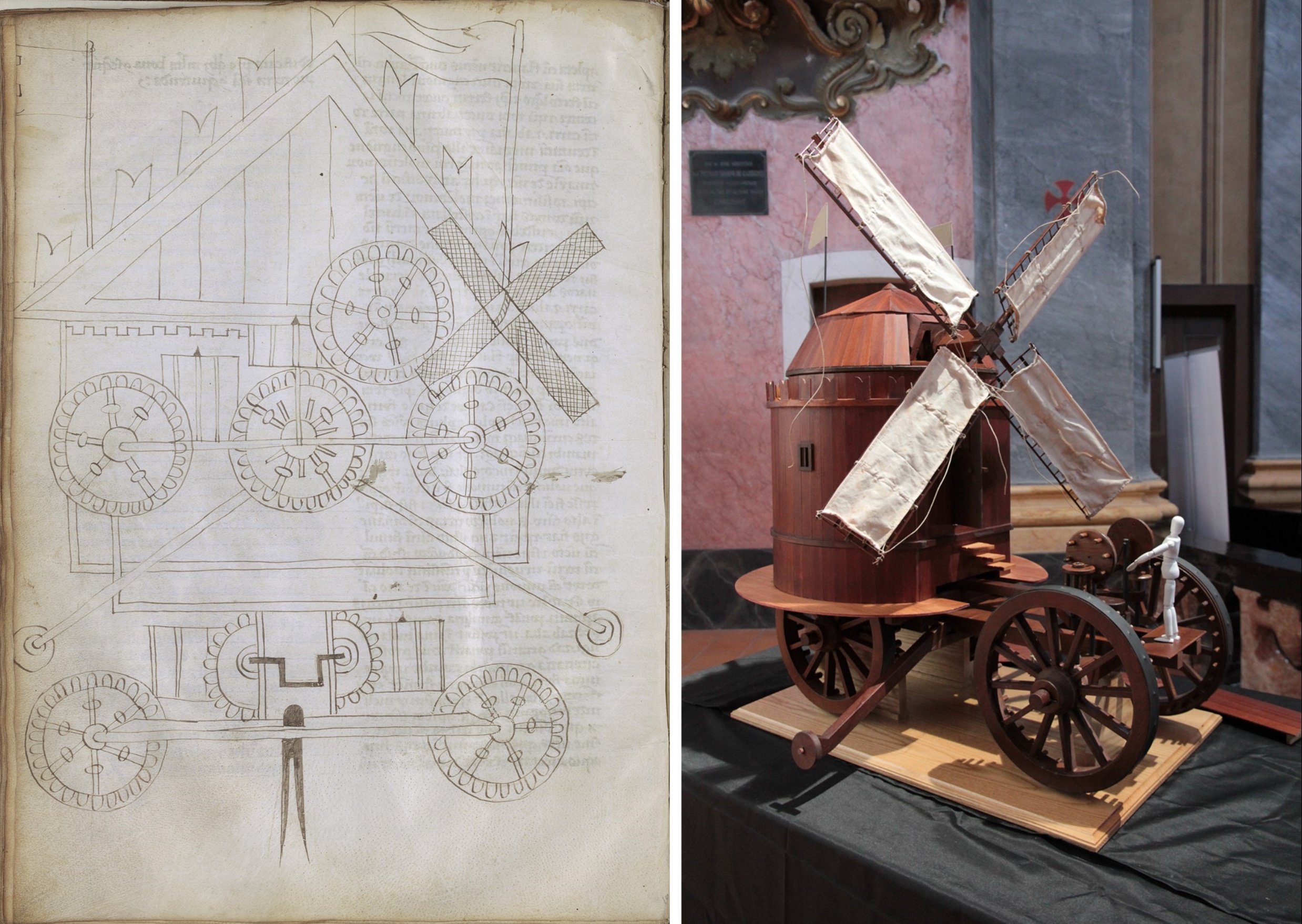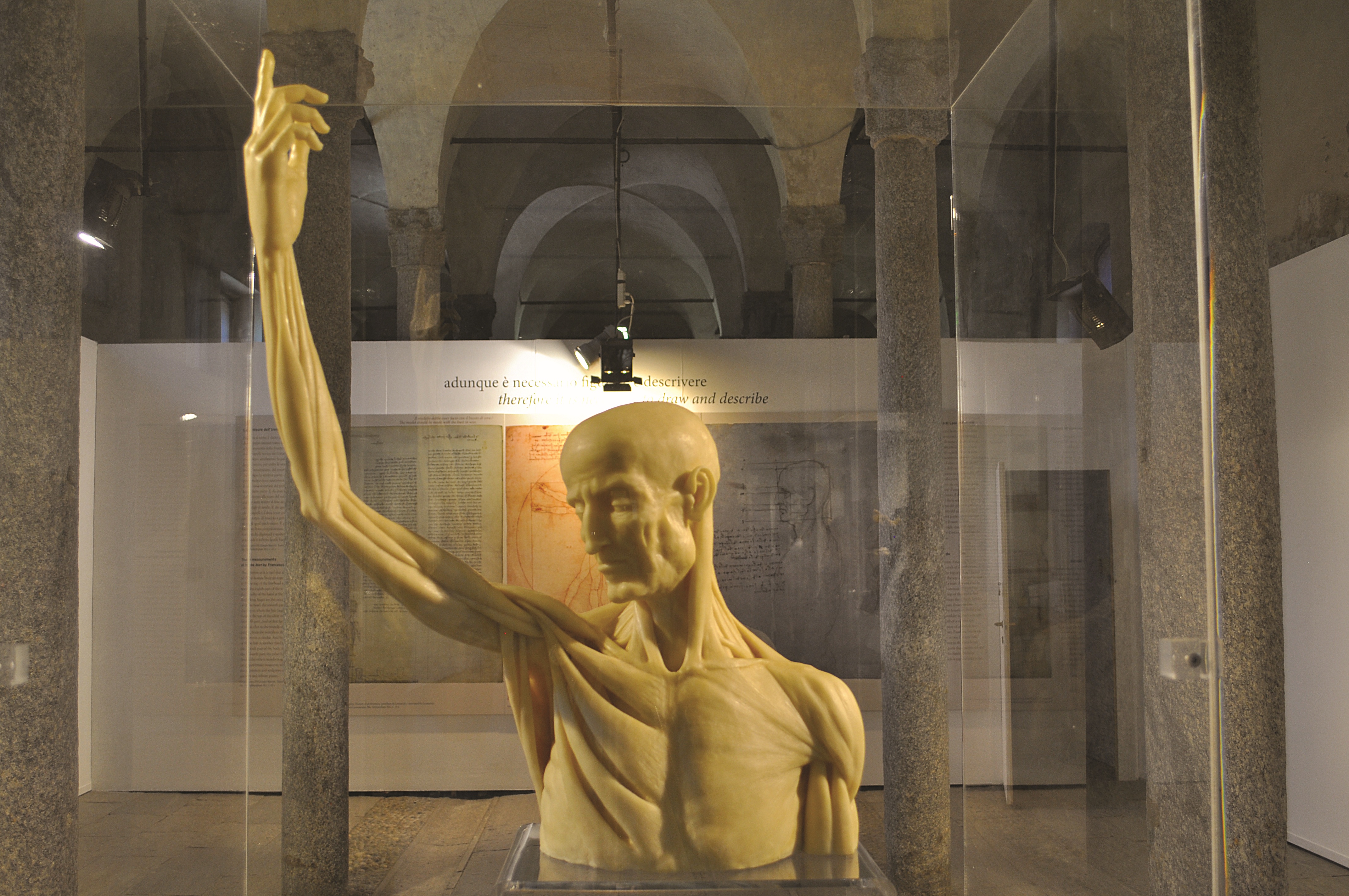Pinacoteca
THE MIDDLE AGES IN MANUSCRIPT BOOKS
An itinerary through the treasures of the Biblioteca Ambrosiana curated by Federico Gallo and Stefano Martinelli Tempesta | Pinacoteca, rooms 2 and 3
The exhibition compares the method of graphical representation of two geniuses of the past, through the reproduction of the masterpiece by Guido da Vigevano Anathomia designata per figuras (1345) and Leonardo da Vinci’s revolutionary anatomical visualization by means of a selection from his numerous anatomical drawings.
Five sculptures were drawn with the traditional wax technique from Leonardo’s anatomical drawings. The exhibition is completed by the wooden model of Guido’s wind-propelled cart, designed as a war machine but which can also be considered the first auto-mobile in history.
The exhibition, curated by Paola Salvi, made possible by the city of Vigevano (owner of the exhibition itself), with the patronage of the Lombardy Region, the Academy of Fine Arts of Brera in Milan, the University of Pavia, supported by the National Committee for the celebrations 500 years since Leonardo da Vinci’s death and organized with the OverArt Association, closes the program of exhibitions proposed by the Veneranda Biblioteca Ambrosiana to enhance its heritage of Leonardo’s works, among the most important in the world.
It presents the reproduction of the 18 figures (in 16 plates) of the Anothomia treatise designated for figuras (1345) by Guido da Vigevano, alongside a series of reproductions of anatomical drawings by Leonardo da Vinci, made between 1480 and 1517 approximately. From some of these drawings, which belong to Leonardo’s vast anatomical repertoire, preserved in the collections of Queen Elizabeth II of England in Windsor Castle, five sculptures have been obtained, conceived by Paola Salvi and made by Moreno Vezzoli, with the traditional technique of waxwork.
“We wanted to focus on artistic beauty – says Paola Salvi – since Leonardo practiced the dissection to know the inside of the human body, presumably with the assistance of a “surgeon”, as was customary at the time, but with the intent to overcome it by bringing the knowledge acquired back to the life of the body in action”.
“His drawings – continues Paola Salvi – follow the anatomical fidelity of the living body, exceed in graphic refinement every “macabre” aspect and testify not only to the reality of the anatomical representation, but also the theories of his time, the same theories that Leonardo visualizes where experience does not allow him to verify and possibly refuse them”.
The exhibition itinerary is enhanced, thanks to the collaboration with Carlo E. Rottenbacher, professor of the Department of Industrial Engineering and Information Researcher at the Department of Structural Mechanics of the University of Pavia, with the reconstruction in scale of Guido da Vigevano’s “wind-propelled cart”, a wooden model deriving from the drawing reatured in the Texaurus Regis Francie (1335), a manuscript which presents remarkable mechanical and visualization solutions for its time.

On the: Guido da Vigevano, Drawinng of the wind-propelled cart from Texaurus regis Francie acquisitionis terre sancte de ultramare, nec non sanitas corporis eius et vita ipsius prolungationis ac etiam cum custodia propter venenum, c. 1375, Yale nel Center for British Arts; on the right: the model of the wind-propelled cart by Guido da Vigevano designed by Carlo Rottenbacher.
The analogy between Guido and Leonardo da Vinci, often proposed on the grounds of similar “genius”, has a deeper and greater substantial motivation than being merely the admiration for men capable of mastering dissimilar branches of knowledge and practices, for example anatomy and engineering, disciplines which our own culture, essentially and necessarily specialist, considers as being widely different.
The exhibition continues ideally in the Sala Federiciana of the Pinacoteca Ambrosiana where the exhibition Leonardo da Vinci and his legacy is on show until March 1: the artists and techniques, curated by Benedetta Spadaccini, which presents some original Leonardo drawings of the Veneranda Biblioteca Ambrosiana, including anatomical studies of legs and the famous presentation letter to Ludovico il Moro, that are linked to the anatomy and the design of war machines.

Ceroplastica, busto con braccio alzato; ideazione Paola Salvi, realizzazione Moreno Vezzoli